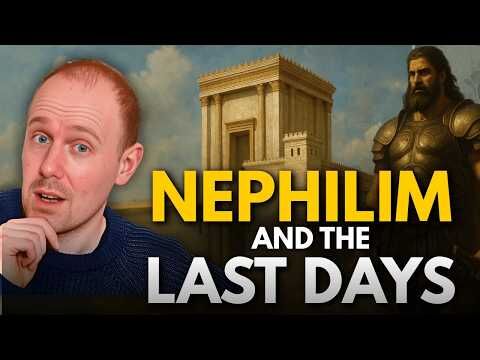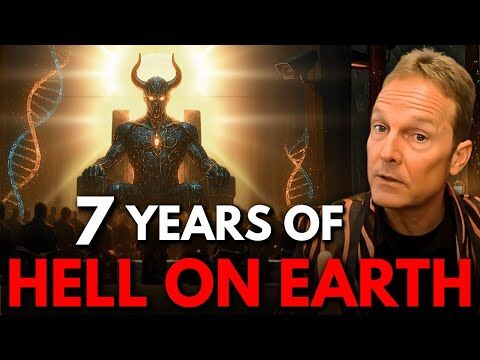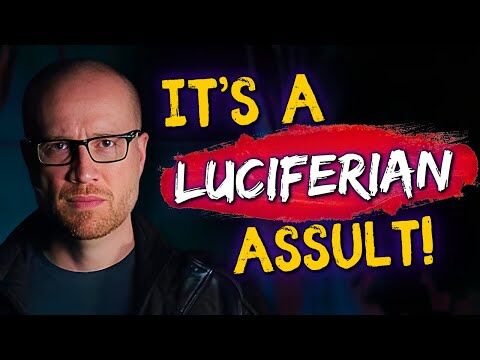In 1999, Gladys Staines lost her missionary husband and two young sons in a horrific attack by Hindu extremists. Today she continues her family’s ministry to India’s forgotten lepers.
The café is filled with chatter, but in a corner chair Gladys Staines sits sipping her coffee, offering cryptic replies to questions. She doesn’t believe in talking much.
She would rather work every day in the tropical heat and dust of India to pass on the message of God’s love. Like the late Mahatma Gandhi, India’s most beloved social reformer, Gladys prefers to live her message than to talk about it.
Moreover, journalists never fascinate her.
“There’s no point in sitting and talking here. Let’s go to the village and see what the poor need,” she says, setting down her cup and sitting back with a stoic smile.
Leaving the busy café at Hebron School in Ooty–where her daughter, Esther, studies–we journey to the leafy village of Baripada in the northern Indian district of Orissa. In the middle of the quaint town, a grassy space opens up with a lime-washed Baptist church to the left side.
Gladys lives in an old bungalow behind the church. A reverential silence fills the small rooms adorned by wall photos, books and pamphlets. On a corner table rests her guest book, filled with words of solidarity offered by visitors.
Gladys Staines, 50, is a wonder to many, a mystery to some. To most, she is a living symbol of Christian mercy. Her dedication to the poor and the lepers of this region and her integrity in her mission have not been uprooted since a murderous crowd burned alive her missionary husband and their two sons 4-1/2 years ago.
But her scars remain. They show up in her silence. Often the quiet surrounding her is so heavy that you feel she must be continuously pondering, whetting the meaning of each moment.
Her husband, Graham Staines–an Australian Baptist missionary–had worked with lepers in Orissa for 30 years. All that changed on the cold night of January 22, 1999.
After camping out one night, Graham and his sons, Timothy, 8, and Philip, 10, were sleeping in the family’s station wagon outside a hospital in the village of Manoharpur. Around midnight, a mob of about 50 Hindu militants came running and screaming. Witnesses said they rushed upon the car armed with spears, swords and iron clubs.
They thrust Graham and his sons through with spears, then shut them in the car. They stuffed straw under the vehicle and set fire to it, and then stood watching the three burn away.
Protests flooded India. Prime Minister Atal Bihari Vajpayee said, “My head hangs in shame.” The murder was described as “a burning shame” by Indian and international media alike.
Last year a special court in India sentenced Dara Sigh, a Hindu extremist leader, to death for the murder of Staines and his sons. Twelve co-defendants were sentenced to life imprisonment.
Healing the Sting of Death
For Gladys, coming through the horror was never easy. It tested her beliefs. It put her through nights and days of agony–of loneliness, acrid moments, chill and despair.
In court, while Gladys was being questioned as a prosecution witness during the trial of her husband’s killers, only a few of her husband’s personal items were produced for her to identify. A burned timepiece, a camera, a watch–scant remains of the day he died.
Calmly she acknowledged they were his. This calm had come from her faith in Providence.
“In fact, since then I have passed through many shades of feelings. Feelings that vary from day to day. It must have been God’s wish. He gave me the strength to face it,” Gladys says while we walk away from the cemetery in Baripada where her husband and sons are buried.
“But sometimes I feel very sad about my children. I still can’t forget their childish pranks,” she adds.
Yet, in other ways, life glimmered warmly during those heartbreaking days. Kindness shown by thousands of people–total strangers–was heartwarming and inspiring. Through tears she recalls the hundreds of Hindu lepers who took part in the funeral procession. Pacifying letters flowed in from all across the country and abroad.
Delegations of local residents came to her and said the villagers wanted her to stay. They expressed sorrow and support. They stood by her.
“That was a great encouragement,” she notes.
Family members in Australia urged Gladys to leave India, but she vowed to stay. “I want to carry on what Graham was doing,” she told them.
Recently, however, she decided to take a furlough in Australia so she could enroll Esther in a school there. She plans to manage the leprosy mission by making periodic trips to Orissa.
People ask her, “If punishment is part of God’s providence, then why is there a need for you to forgive?” She gladly answers them with God’s own words from the Scripture: “‘It is mine to avenge; I will repay'” (see Heb. 10:30, NIV). Since the tragedy she has discovered that her own act of forgiving has reverberated throughout India and its people.
“Wherever I go people recognize me and ask me why I [forgave],” she says. “Yet I feel they are inspired by the idea of forgiveness.”
When one woman remarked that she could not understand why Gladys had forgiven the killers, Esther later quipped: “Mummy, I can’t understand how they can’t understand why we have forgiven.”
It was then Gladys understood how deeply the teachings of Christ had penetrated her immediate family.
“Forgiveness brings healing,” she says. “If I have something against you and I forgive you, the bitterness leaves me. Forgiveness liberates both the forgiver and the forgiven. The Bible teaches you to forgive. Has not Jesus set the example?”
Touching the Untouchables
Putting her personal agonies behind, Gladys has walked ahead to carry on with her mission–to take her place of responsibility among the poor leper patients of Orissa.
She walks through the Mayurbhanj Leper Colony, which she looks after, cheering up the residents, sharing jokes. Here she cares for about 60 leprosy patients. She bandages their wounds and teaches them skills such as basket weaving to help them stay productive. She is also secretary of the 105-year-old Mayurbhanj Leprosy Home.
“Our leprosy work is continuing,” she says while handing out the monthly dole to each resident who helps around the facility. “This is where people with leprosy come for treatment, but they also are involved in the running of the home.”
The colony has its own dairy, which produces about 70 liters of milk a day.
“In the beginning, nobody touched cow milk from the leper colony,” Gladys says. “Dr. Das, who was respected in the town, helped us. He and Graham went to each house and taught them that leprosy cannot spread through milk. They convinced one shop to sell ghee [a clarified butter]. Then we sold pure milk.
“Slowly the stigma melted away because the milk products were of finest quality,” she says. “It made people sympathetic to the lepers.”
Women here make lunch boxes, flower baskets, doormats and shopping bags with leaves of a grass called Sobai, which grows lushly around the area. They sell all these in the local market and earn a nice income.
Residents are cheerful, contented with their newfound dignity. In a garden they grow pumpkins, cucumbers and a local fruit called au. Rice fields, a vegetable plantation and fruit trees fill some 36 acres of land–all products of hard but happy labor.
“We don’t just heal [the lepers], we also give them hope,” Gladys explains. “In these parts, leprosy sufferers are rejected by society. They are thrown out of their homes. It makes a huge difference in their healing that we love them, accept them and touch them.
“We are building a 40-bed hospital as an extension of the leprosy home,” she adds. A trained nurse, Gladys is glad she has this chance to help those tossed aside by society. “The home will take care of patients who have nowhere to go.”
A Work Continued
India today has a reputation as a nation of religious persecution. Conversion is a topic of national debate. Some Christians in the country are discussing whether or not proselytizing is correct to do at this time.
Gladys has her own answers to such dilemmas.
“Nobody can change anybody,” she says. “To me, Christianity is not religion. It’s a personal faith. Religion is the result of man aspiring to reach God. But Christianity is God reaching down to man. So you have two opposites.”
She denies that her mission has anything to do with conversion.
“If we were converting, wouldn’t there be only Christians in the tribal hostel we run?” she asks. “No matter how many prayers you say, only God can change you. Faith is not simply a matter of following a tradition. It is about your relationship with Jesus. So then, where’s the question of me converting anyone?”
Australian like her late husband, Gladys grew up on a farm in Ipswich, Queensland, and was raised in the Brethren Christian Assemblies, where she read the Bible and heard missionaries’ stories. That childhood gave her “a vision to serve the Lord,” she says. She studied nursing and came to believe that God wanted her to work among leprosy sufferers.
During one visit to India, she met Graham, who was working there as a missionary. The two had lived just 20 miles apart in Australia but had never met. They married in 1983. During their 15 years of marriage daughter Esther and sons Philip and Timothy were born.
“He was a great husband, a great father,” she says of Graham.
Those who knew her husband remember him as a kind and gentle man who always dressed casually, sported a trademark hat and wheeled around Baripada on his rickety bicycle.
Graham did a lot for the villagers. He encouraged them to become educated. He taught them the Bible. Upon seeing that the tribals could not read other languages, he learned their native Ho and then translated the New Testament for them. His efforts restored dignity and a sense of purpose to the leprosy patients.
Gladys now treads the same path.
“Sometimes I wonder where she gets such willpower,” says Shirley Wheatherhead, Gladys’ younger sister. “If I had been in her place, I’d have been snuggled up with my pain in some corner. She really amazes me.”
Swami Agnivesh, one of India’s renowned social leaders, adds: “We shall continue to be challenged by the spiritual stature of Gladys Staines as revealed through her act of forgiveness. A killer is one who does not care for the life of others. The saint, in contrast, values the life of others, even of his own would-be assassins, more than his own.”
For this tall, blonde, blue-eyed “saint,” life during the last few years has been a trek through a long, dark tunnel marked by both pain and commitment. Nevertheless, she continues her work, hardly ignorant of its dangers yet dedicated to the people who need her.
To help explain why she remains unshaken in her mission, she relates a story told to her about one man’s reaction to her experience.
“I’ve heard many stories of people who have come to Christ after seeing the way that I have accepted it all,” Gladys says. “I heard this one from someone in a neighboring state who was distributing tracts: One man who received a tract asked, ‘Is this the same Jesus that Gladys Staines believes in?’ ‘Yes,’ the pastor said. ‘Then I want to know that Jesus,’ the man stated.”
If her experience has drawn even one person toward Jesus, Gladys counts all her agonies worth suffering. One glimmer of hope passed on, a single instance of becoming the reason for another person’s change–they are enough to make her smile and consider her life fruitful.
Joshua Newton is a writer and photojournalist who lives in India. His work has appeared in 50 publications. If you would like to support Gladys Staines’ work in India, send your tax-deductible gifts to Christian Life Missions, Attn: India’s Lepers, P.O. Box 952248, Lake Mary, FL 32746.










































